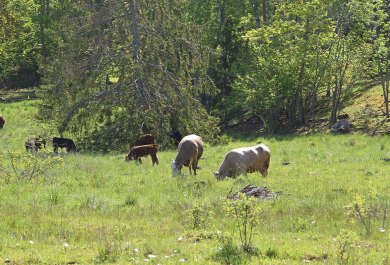New research shows that key European Union conservation actions targeting wetland habitats help waterbirds respond to climate warming.
As the world warms up, species move north as it becomes possible to occupy new areas. The phenomenon is well documented including for wintering waterbirds; many species now stay in or close to Finland, including for example, whooper swans. However, these shifts in distribution are not fast enough to keep up with the rapid change in climate.
Earlier work showed that some aspects of management aid waterbird species responding to climate change. Now, new research shows that especially conservation projects targeting wetland habitats help waterbird communities to respond to climate warming. Waterbirds provide important ecosystem services. Helping waterbirds respond to the challenges of a warming world assures also future generations can enjoy these.
“Where wetland habitats were the target of conservation projects, waterbird communities changed twice as fast compared to areas where no habitat conservation was implemented. We did not observe such differences for different types of species targeted conservation. However, in all studied waterbird communities changes lagged behind climate warming, highlighting the need for conservation supporting biodiversity responses to climate change,” says doctoral researcher Leonie Jonas from the University of Turku.
The study focused on conservation actions carried out in EU Natura 2000 sites financially supported by EU LIFE funding. Since it’s start over 30 years ago the LIFE programme has supported thousands of conservation projects with a total budget of 2.2 billion Euros.
“It is exciting to learn that LIFE funding, which is primarily designed for a rather static type of nature conservation, can actually function in a more dynamic way promoting biodiversity conservation in a rapidly changing world,” says Lead researcher Elie Gaget from Tour du Valat Research Institute.
The findings of this study highlight the importance of active conservation measures in protected areas to mitigate the impact of climate change on biodiversity. At least for waterbirds, for management to support species community adjustment to warming temperatures, it is crucial to target a species community’s habitat rather than targeting the species group directly.
The study used thousands of waterbird observations collected by professionals and volunteers in 26 EU countries. Surveys were coordinated by Wetlands International at the international level. The study was published in the scientific journal Biological Conservation.




